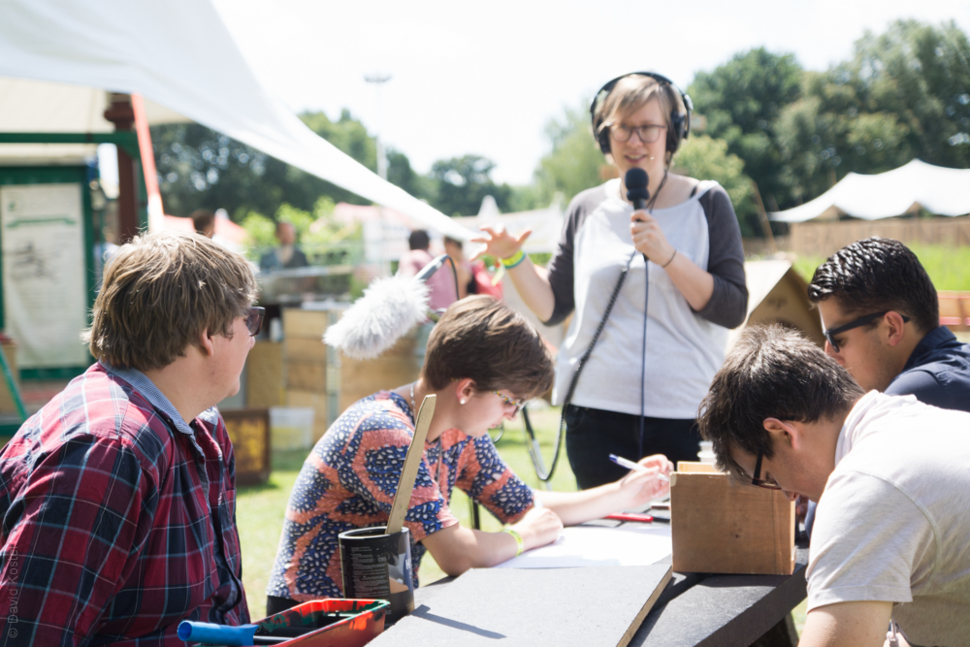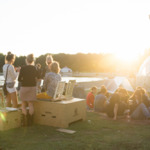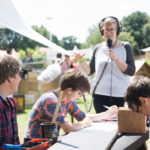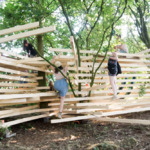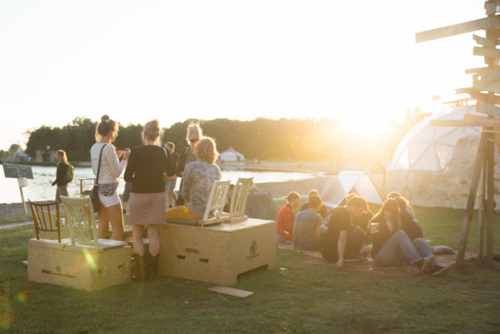
interesting initiative, called DORP at Welcome To The Village Festival. It
all started with the fact that me and my friend won the D-exto design
competition for sustainable festival furniture, which made it possible for
us to execute our Mix & Match design and to showcase it at several
festivals by traveling along with the D-exto pavilion.
D-exto, Delft Experience Tomorrow, is a TU Delft based initiative
focussed on sustainable innovation on campus where students of
diverse disciplines work together to design and present appealing
technical designs or applications in a sustainable pavilion that invite
visitors to interact and thereby provoke thought and motivation to
change their lifestyles. The pavilion travels to different events and
festivals in order to promote sustainable awareness among its visitors.
D-Exto believes that festivals and events are the perfect playground for
sustainable innovation as a festival is like a city; in need of all daily
services. The temporality however, makes it very simple to test new
innovations that can then be developed further to be implemented in
the ‘real world’.
Based on this idea DORP was developed; a project in which
numerous partners collaborate to investigate ways to build future editions of
Welcome To The Village on fair and sustainable principles. Even before the
festival has begun, artists, scientists, engineers, entrepreneurs, students,
professionals and the public work on finding sustainable solutions for the
different challenges faced. Festivals provide an unique arena for the
exchange of ideas and knowledge where crossovers can stimulate
innovation. And that is exactly what the DORP project is about.
Several challenges were listed as a starting point; How do we set up
a logical, local food chain? How do we make our energy consumption more
sustainable? What are more sustainable alternatives for a camping tent? How
do we involve 1% of all visitors in our issues? In short food, energy,
alternative sleeping places and integration of the public. As a part of the
energy challenge, the PIXI was developed; collaborating artist-collective
WERC designed and made two hundred interactive light spheres that jointly
light some of the dark campsite route and work on solar power. As
alternative sleeping spot, students and architect Alex van de Beld joined
forces and built ‘Nest’; a structure consisting of long wooden beams that use
the trees as columns to create a nest for festival visitors. Afterwards, it can
be removed without leaving a trace of harm to its location. Unfortunately it
was not allowed to actually stay overnight due to the festival rules, thus it
was used as a relax installation in nature for the festival visitors.
These are just two examples of projects elaborated in DORP, but we
had many other brainstorm sessions to tackle the challenges and designed
solution which we built on site. That was what made is so inspiring and fun; it
really was innovation on location. This incubating week has been recorded in
sound and film. A link to the interviews and radio sessions developed on site
and a short documentary about the project can be found to the right of this
column, as well as more info about DORP in general. I had a great time and
met so many inspiring people, developed with them solutions for next year
and hope to see them again and the improvements at WTTV 2016!
DORP @ WTTV15: INNOVATION ON LOCATION
